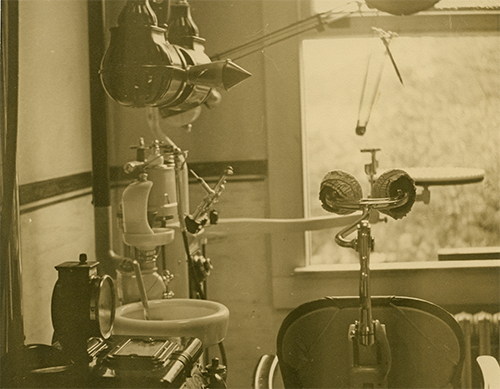

Sponsored by: MUSC College of Dental Medicine Class of 1977 in memory of Dr. William James Biggins
Despite the hardships of the Great Depression and World War II, the practice of dentistry advanced during the middle decades of the 20th century. New dental instruments, materials, and techniques allowed dentists to provide better care to their patients. The high-speed, airdriven contra-angle hand piece improved the dentist’s ability to quickly and efficiently prepare teeth for restoration. The introduction of bonding acrylic resins and the acid-etch technique gave dentists more durable restoration materials.
On the home front, the introduction of the nylon-bristled toothbrush, which was less expensive to produce and thus more accessible to consumers, resulted in better at-home oral care. The introduction of fluoridation into municipal water systems, though controversial, strengthened teeth and improved dental health of the general population.
Meanwhile, the profession was making strides in the areas of specialization. In 1947 the American Dental Association recognized the specialties of Oral Surgery and Periodontics; by the end of the 1950s it had recognized the following: Pediatric Dentistry, Periodontics, Oral Pathology, Orthodontics, and Dental Public Health.

Dr. Neill W. Macaulay’s office in Columbia, S.C. From the personal scrapbook of Judge Alexander Macaulay.